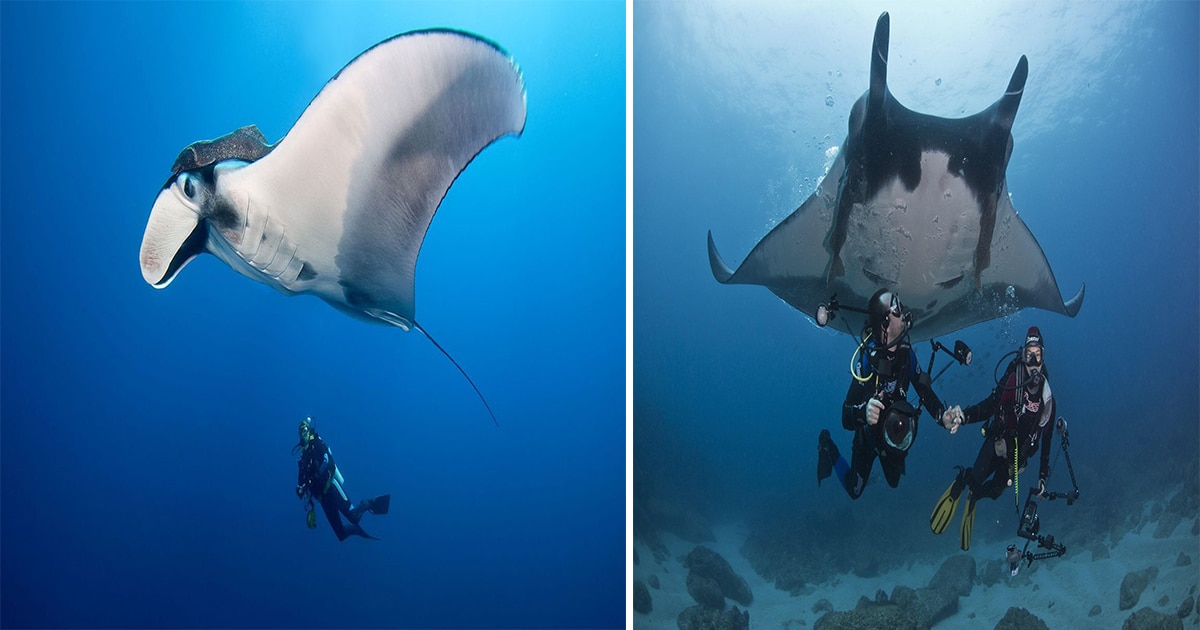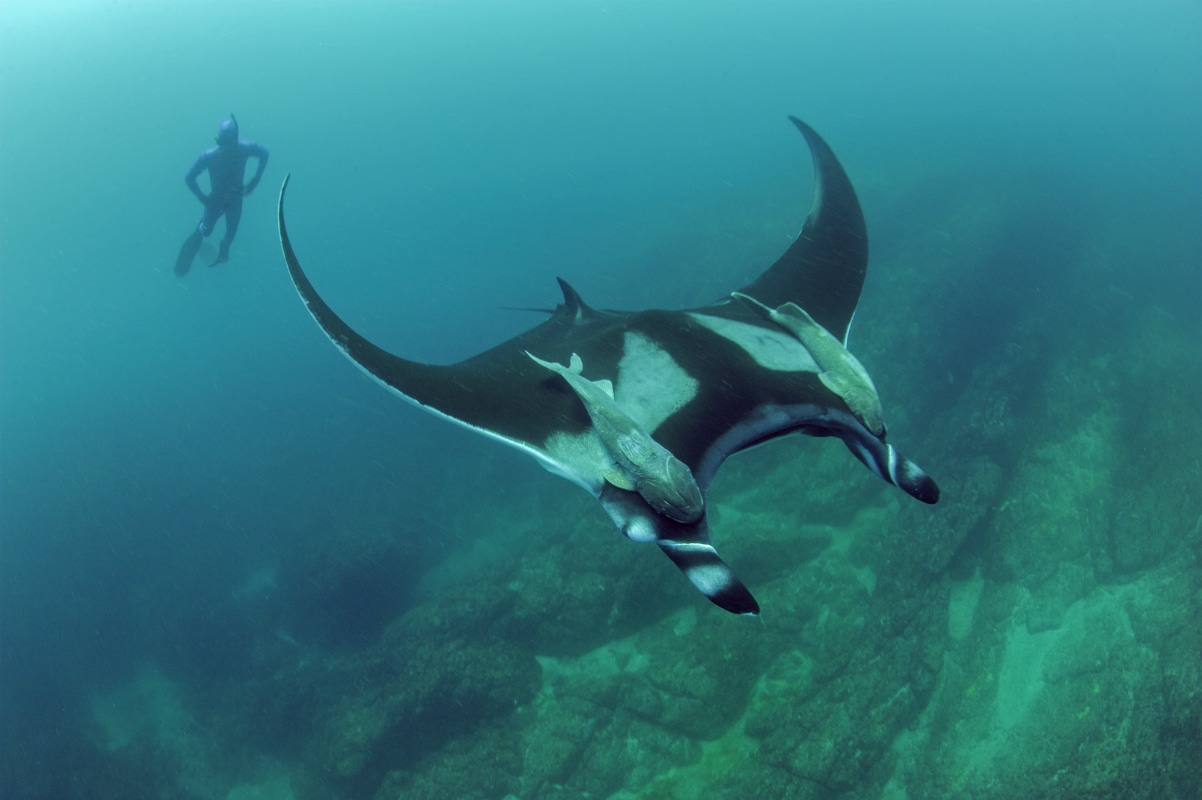
Manta rays, the magnificent giants of the ocean, are undeniably captivating creatures that never fail to amaze us. These incredible beings hold the title for being the world’s biggest rays, and they are divided into at least two species: the reef manta (Manta alfredi) and the gigantic oceanic manta (Manta birostris). While they share a similar appearance, their preferences in habitat differ, with the oceanic manta favoring the vast open ocean and the reef manta opting for shallower coastal areas.
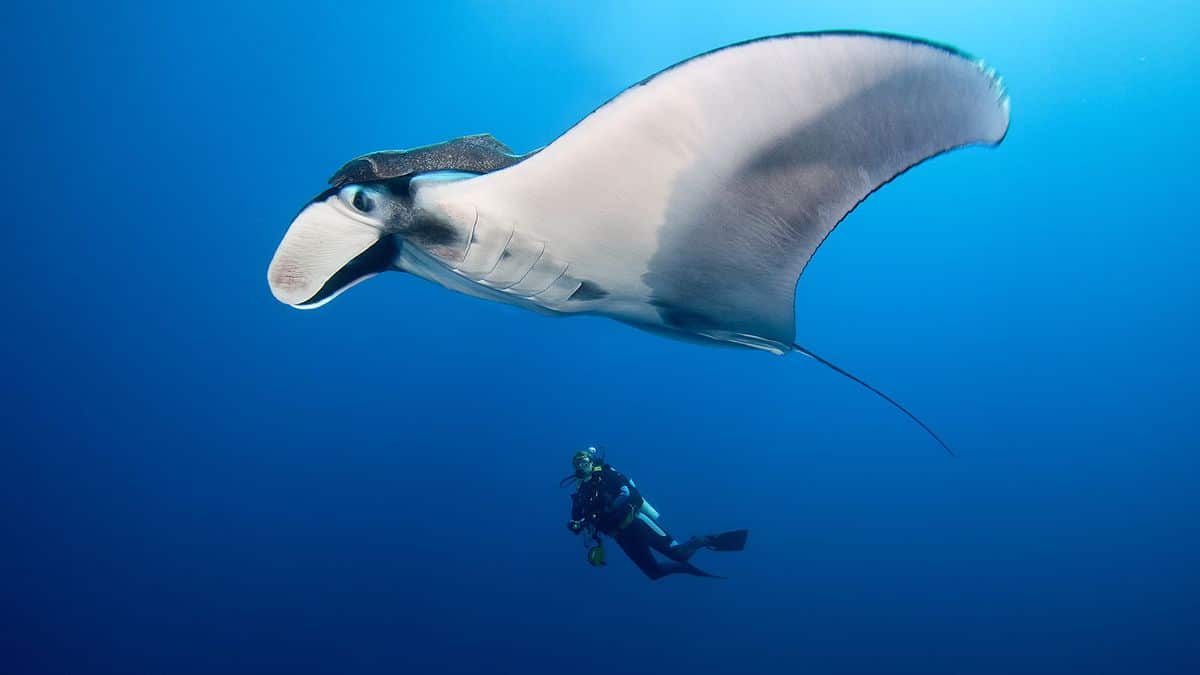
The name “manta” derives from the Latin word for “mantle or cloak,” which perfectly describes their unique shape. Manta rays possess triangular pectoral fins, large heads, and ventral gill openings. Their cephalic fins, resembling horns, have earned them the nickname “devil ray.” Both species have short, square teeth, and their skin denticles, color patterns, and tooth patterns vary between them.
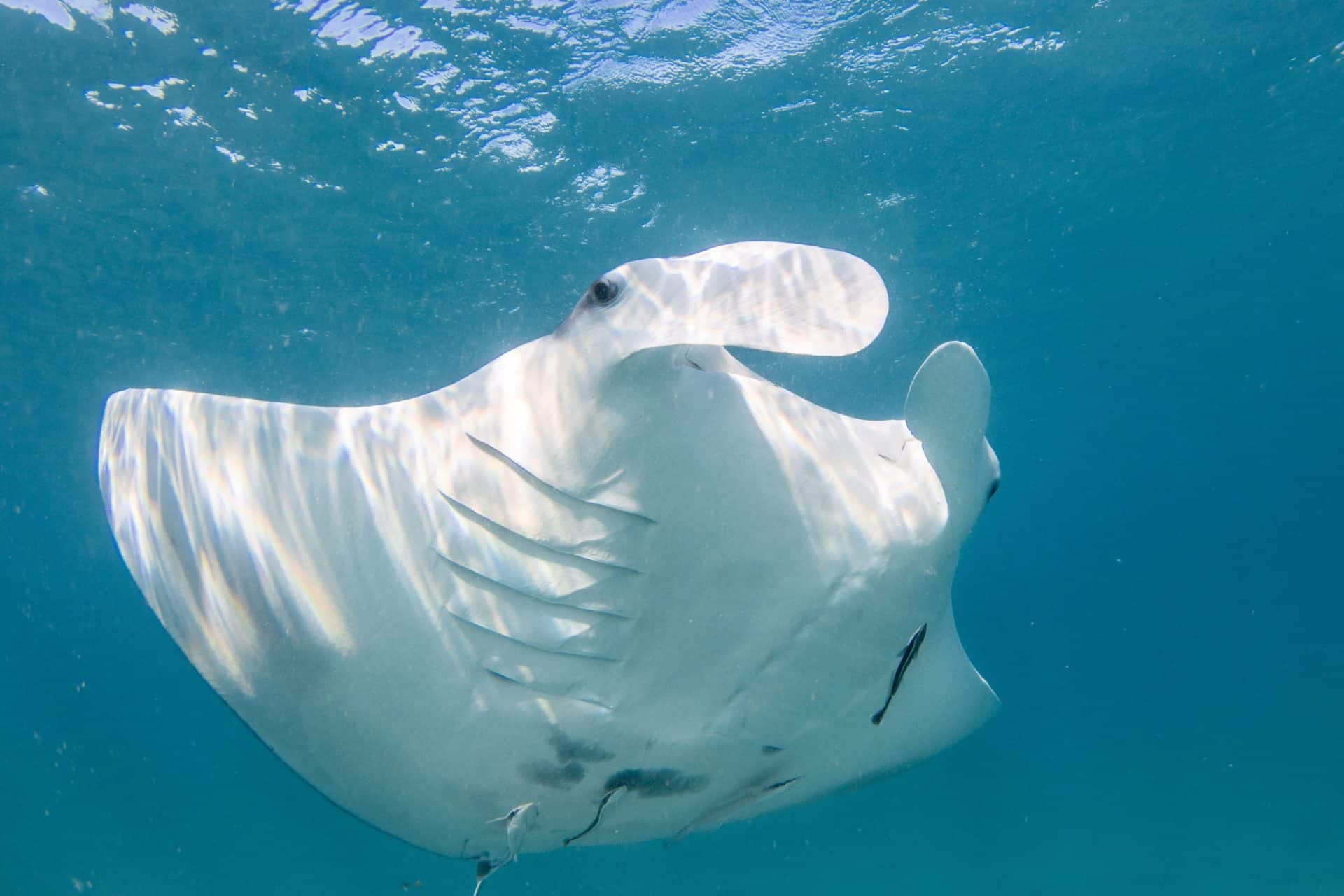
Most mantas exhibit a dark or black coloration on their upper side, with distinct “shoulders” and lighter undersides. Some individuals may display dark markings on their ventral surface. While both species can be predominantly black, Manta birostris features a dorsal fin spine, although it does not possess a stinging mechanism. Manta birostris can grow up to an impressive 23 feet wide, while Manta alfredi reaches a maximum wingspan of 18 feet.
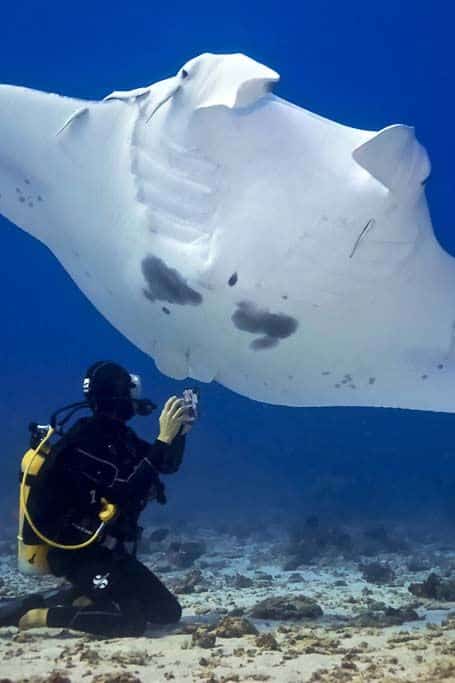
A gigantic manta ray can weigh as much as 2980 pounds (1350 kg). Manta rays, being filter feeders, require continuous forward movement to allow oxygenated water to flow over their gills. They gracefully swim underwater, using their pectoral fins to navigate and “fly” through the water. Surprisingly, despite their massive size, manta rays are also known to breach the water’s surface. These intelligent creatures possess one of the highest brain-to-body mass ratios among fish species.
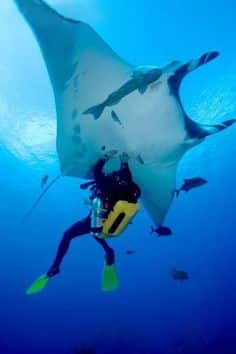
Manta rays can be found in tropical and subtropical waters worldwide. Their range extends from as far north as North Carolina (31°N) in the United States to as far south as New Zealand (36°S). However, they tend to venture into temperate waters only when the temperature reaches at least 68 degrees Fahrenheit (20 degrees Celsius).
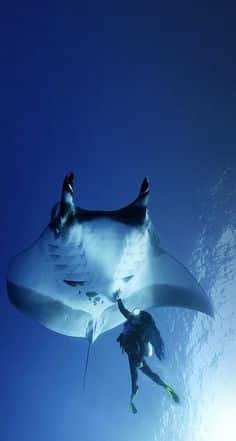
Both species are pelagic, primarily residing in the open ocean. During the spring and fall, they are abundant in coastal seas. Manta rays are capable of covering distances of up to 620 miles (1000 km) and can inhabit depths ranging from sea level to 3300 feet (1000 meters). Throughout the day, they swim near the water’s surface, while at night, they venture deeper into the ocean.

As filter feeders, manta rays primarily consume zooplankton such as krill, shrimp, and crab larvae. Using both their sight and scent, mantas hunt by herding their prey in circles, taking advantage of the water currents to gather the plankton. They then engulf the food by swimming through the concentrated ball with their mouths wide open.
Manta rays possess fascinating mating rituals, varying depending on their geographic location. Courtship often involves fish swimming in “trains,” which frequently occur during full moons. During mating, the male clasps onto the female’s left pectoral fin, rotating her belly to belly and inserting a clasper into her cloaca. Gestation lasts approximately 12 to 13 months, and inside the female, the egg casings hatch, eventually giving birth to one or two pups. Females typically give birth every two years.

females, with the latter maturing between 8 and 10 years of age. Manta rays can survive in the wild for up to 50 years, but they face predation from killer whales and large sharks. Additionally, cookie-cutter sharks pose a potential threat, inflicting round “cookie-shaped” bites on their victims.
Understanding the captivating world of manta rays provides us with insight into their extraordinary lives. These gentle giants contribute to the rich biodiversity of our oceans and deserve our admiration and protection. By raising awareness and implementing conservation measures, we can ensure the preservation of these magnificent creatures and the delicate balance of marine ecosystems they inhabit.
